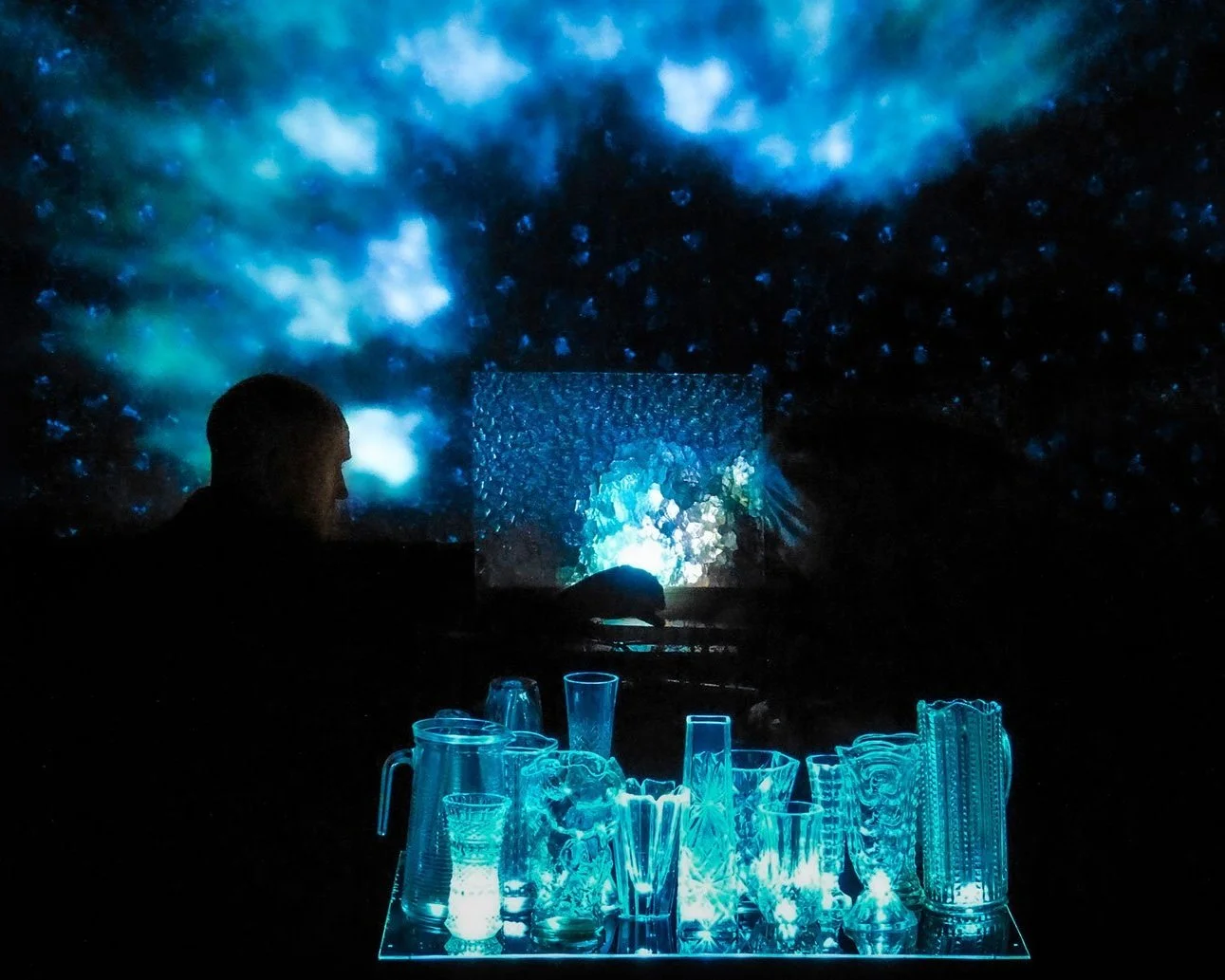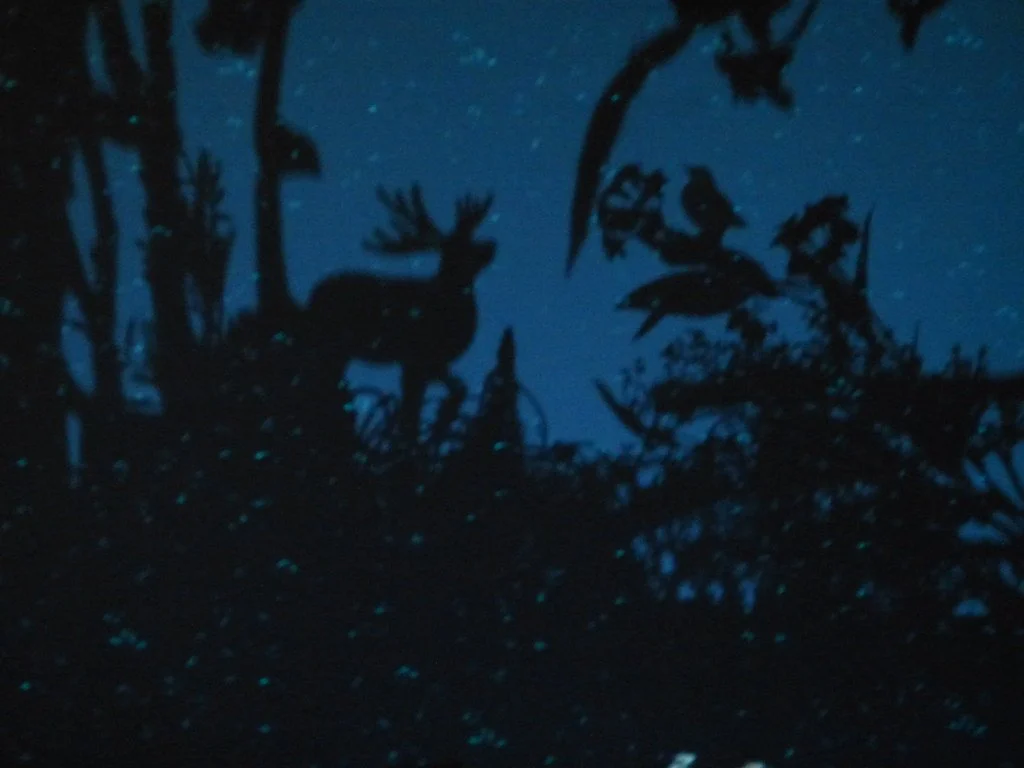Teatret Gruppe 38 conjures delicate, low-tech magic at the Vancouver International Children's Festival
A Story of a House That Turned Into a Dot blends shadow puppetry, storytelling, and music in an intimate show that explores a big emotion
The Vancouver International Children’s Festival presents A Story of a House That Turned Into a Dot at The NEST from June 2 to 5. The fest runs May 31 to June 5, with online presentations to June 15
TEATRET GRUPPE 38’s A Story of a House That Turned Into a Dot is full of delicate, handmade magic. A penlight put behind a crystal glass conjures a frosty snowscape, then morphs into a field of tall grass.
What’s most striking talking to Bodil Alling, a playwright, actor and longtime artistic leader of the award-winning Danish theatre company, is that these gentle images grow out of a tender and deeply empathetic approach to children.
“I am very concerned about that in all the performances: that there is so much beauty around the stage so that it is so much easier for the audience to join you in the journey—that every little prop is so beautiful that you feel fine to be pulled into it, even though it might sometimes be sad or strange,” she explains to Stir in a Zoom call from Toronto, where Gruppe 38 is performing. “It’s comforting you so you can cope. And it’s done with a lot of care.”
In the case of A Story of a House, which debuts at this year’s Vancouver International Children’s Festival, the piece started with the elemental emotion of anger, and how hard it is for little ones (not to mention full-grown adults) to try to process it. Working at their seaside headquarters in Aarhus, the team of artist collaborators took their usual year and a half to develop the work’s unique mode of storytelling, blending narration, music, shadow play, handcrafted props, and masks.
In the production, a small incident sparks a child’s anger: a mother is counting out strawberries between her children, but is one short. “It’s not fair,” the girl cries, and runs away in anger—a paper-crafted house becoming smaller and smaller, and finally a dot, as she flees.
“When the mother says ‘It’s fine, it doesn't matter,’ it may seem small but it is the most important thing you could say,” says Alling, explaining that, to a child, it makes her feel that she doesn’t matter.
What follows is a poetic journey that uses imagery to conjure the stages of emotion—the icy world symbolizing the way the girl feels cut off from her home and family because she is so overwhelmed with anger. There are subtle suggestions, though—including a recurring wallpaper pattern—that the dreamlike journey may be all in her head.
“But it’s such a powerful journey, because you are alone in the world where nobody can comfort you when you are so angry,” Alling says. “I think it is not something that you explain, it’s something where you are just in it.”
What sets the intimate show apart—other than its refreshingly low-tech approach in this screen-indundated world—is that its approach doesn’t include explanations for every moment. It doesn’t read like a lesson being taught to its audience (in this case, recommended for eight years old and up).
“In a way I think children understand it better than if you want to teach them something—I think that’s really boring,” Alling asserts. “I'm not a school or a church; we are something else. What I’m interested in is dragging them into another kind of view of life, and troubles and sadness and all these things that make life difficult and exciting at the same time.”
Throughout the enchanting performance-meets-art-installation, Alling develops a quiet bond with the viewers, acknowledging their presence, even if only through a look. “There’s just an idea of showing the audience that I know about it, I recognize it, I feel this same pain,” says the theatre artist, who prefers not to draw a line between “children’s” and “adult” theatre.
And after shows around the world, Alling has had the chance to find out quite a bit more from children about the way they feel.
“When I go to talk to them afterward, I never ask them questions about understanding things; I would rather talk more philosophically about what happened or, ‘What do you recognize?’” she says. “And then I get so many stories from the children about anger. I can see the things that really piss them off are very small things and they have very much to do with unfairness—like a little brother who they love very much, but who is a real pain in the ass!
“There are so many stories they give you afterward, if you make a space for it which is not about the performance at all but about what it opens,” she adds. “And the children are not embarrassed to tell things that you would never tell as an adult. I like that very much.”















